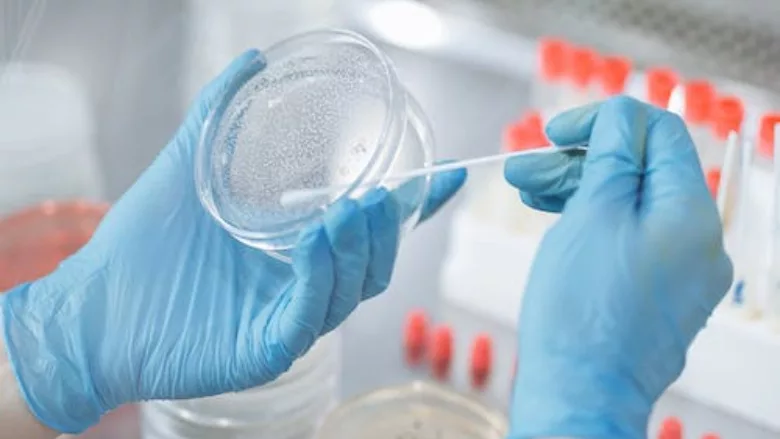Experts Advise FDA, USDA-FSIS on RTE Pathogen Testing, Food Safety of Reused Ag Water

Credit: Thirdman (thirdman) via Pexels
Two reports adopted in April 2021 by the National Advisory Committee on Microbiological Criteria for Foods (NACMCF) have recently been published. The reports were written to advise the U.S. Food and Drug Administration (FDA) and the U.S. Department of Agriculture’s Food Safety and Inspection Service (USDA’s FSIS) on microbial testing of ready-to-eat (RTE) foods and the safety of recycled water in food production, respectively.
NACMCF provides scientific advice and peer reviews to federal U.S. food safety agencies to support an integrated national food safety systems approach that assures the safety of the country’s food supply.
Microbiological Testing of RTE Foods Under Current Good Manufacturing Practice
FDA sought advice from NACMCF on the utility and necessity of industry testing RTE foods for pathogens, as well as criteria industry could apply in determining the appropriate level of microbial testing to verify pathogen control for RTE foods.
FDA’s final rule, titled, “Current Good Manufacturing Practice, Hazard Analysis, and Risk-Based Preventive Controls for Human Food” (Title 21, Code of Federal Regulations (CFR), Part 117) requires a facility that has identified hazards requiring preventive controls to verify that the preventive controls are effective and consistently implemented. Verification activities for preventive controls for microbial hazards include product testing for a pathogen, as appropriate.
Because of the flexibility FDA provided in the final rule, the agency requested advice from NACMCF on how industry can determine the appropriate microbial testing for each facility. The focus of NACMCF’s report is to provide practical advice for manufacturers and processors that are subject to the preventive control requirements in 21 CFR Part 117. The advice is meant to assist in deciding when to test for pathogens (or appropriate indicator organisms) to verify process control for pathogens in RTE foods under FDA's jurisdiction.
Food categories subject to the preventive control requirements in 21 CFR Part 117 include RTE dairy products such as cheeses, butter, and milk; grain-based products such as baked items and cereals; deli salads, sandwiches, and entrees intended for heating; nuts and nut butters; fresh-cut fruit, dried fruit, and leafy greens; and spices and herbs.
Looking for quick answers on food safety topics?
Try Ask FSM, our new smart AI search tool.
Ask FSM →
The report includes advice on eight charges:
- Principles and criteria a company should apply when determining the need for and designing an effective microbial testing program to verify the efficacy of processes for pathogen control
- Situations in which testing other than for pathogens or indicator organisms, such as enzymes, would be an appropriate verification activity for a company
- Situations in which verification testing by a company would not be necessary if there is evidence that the appropriate treatment was applied
- Considerations a company should apply when selecting a test microorganism (e.g., specific pathogen or specific indicator organism) and type of test (e.g., presence-absence or enumeration), as well as appropriate indicator microorganisms
- Principles and criteria a company should apply in determining the frequency of verification testing of finished product
- Situations in which testing sites other than finished product can achieve the goal of verifying the adequacy of microbial hazards
- The impact of environmental monitoring as a verification activity, as required by 21 CFR Part 117 in some cases, on frequency and extent of product testing verification activities by companies
- Criteria a company should apply in determining that microbial testing results indicate a loss of process control, and actions a company should take.
NACMCF states that each individual firm should consider if microbial testing of a product is an appropriate verification activity, and if so, the target microorganisms for a given commodity. Such decisions should be made by each firm based on the facility; ingredients used; processing and packaging; level of anticipated control; and product shelf life, intended use, and potential storage and handling at retail or by the consumer.
Use of Water in Animal Production, Slaughter, and Processing
As water is becoming an increasingly scarce resource and is an essential part of food animal processing, USDA’s FSIS sought NACMCF’s opinion on the safe reuse of water in order to reduce water consumption in food animal agriculture. Specifically, FSIS requested guidance from NACMCF regarding current water usage practices, guidelines, and regulations for FSIS-regulated products to help clarify the following issues:
- Water usage practices for slaughterhouses and processors, and possible opportunities for water conservation or the use of alternative water sources
- The feasibility of a fully closed water system, and available technological strategies for water reuse, recycling, reconditioning, and reclamation
- Microbiological, chemical, toxicological, physical, and nutritional water contaminants, and the prevalence of such hazards in potable water in comparison to reused water
- How residual contaminants in water used for animal production, slaughter, and processing affect food quality and safety; the quality implications and public health risks associated with contaminants at levels anticipated for reconditioned water, and how such risks can be assessed; and how residual contaminants in water affect the functions of various materials added to water used in all stages of food production and processing, such as feeds, medicines, and antimicrobials
- The best ways to assure and monitor the quality and safety of alternatively sourced water used in FSIS-regulated operations
- Special considerations for foods that are produced entirely within water, such as fish
- Precautions establishments should take when floodwater or runoff affects a food or water source or a processing area
- Technologies for the replacement of liquid water in food production and food processing areas (e.g., foam, mist, or dry chemicals), and emerging technologies that may reduce the need for or volume of water in processing.
NACMCF’s report states that conducting a review of cleaning, sanitation, and other manufacturing practices and the use of alternative technologies, such as air chilling instead of water chilling, helps in the identification of areas in which changes could contribute to an overall reduction of water use in a processing establishment. NACMCF points to newer technologies—such as ozone generators, UV treatments, and surface coatings with sustained antimicrobial properties—that are being approved by the U.S. Environmental Protection Agency (EPA) for specific sanitation practices and may provide viable alternatives to reduce water usage during cleaning and sanitizing in animal food establishments.







